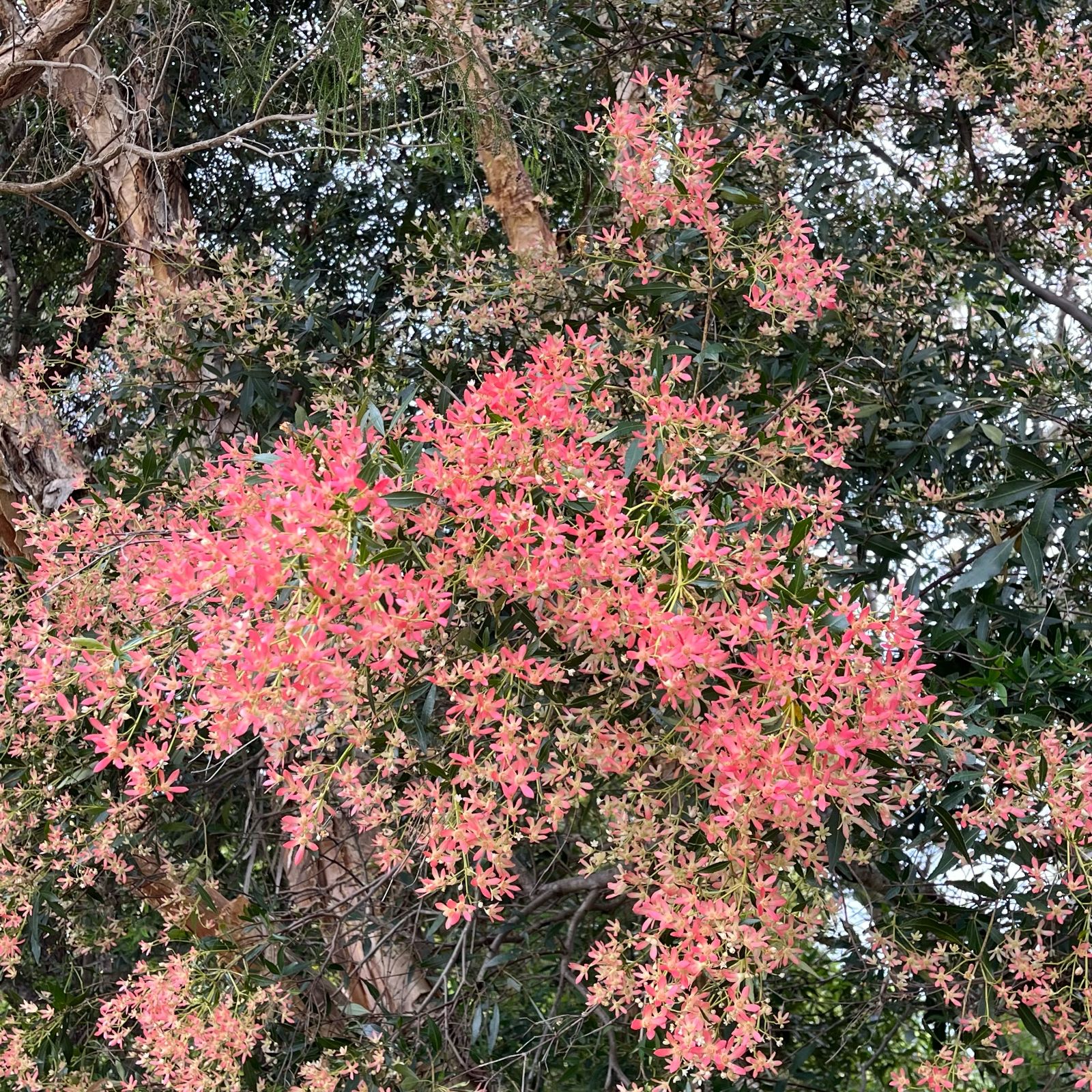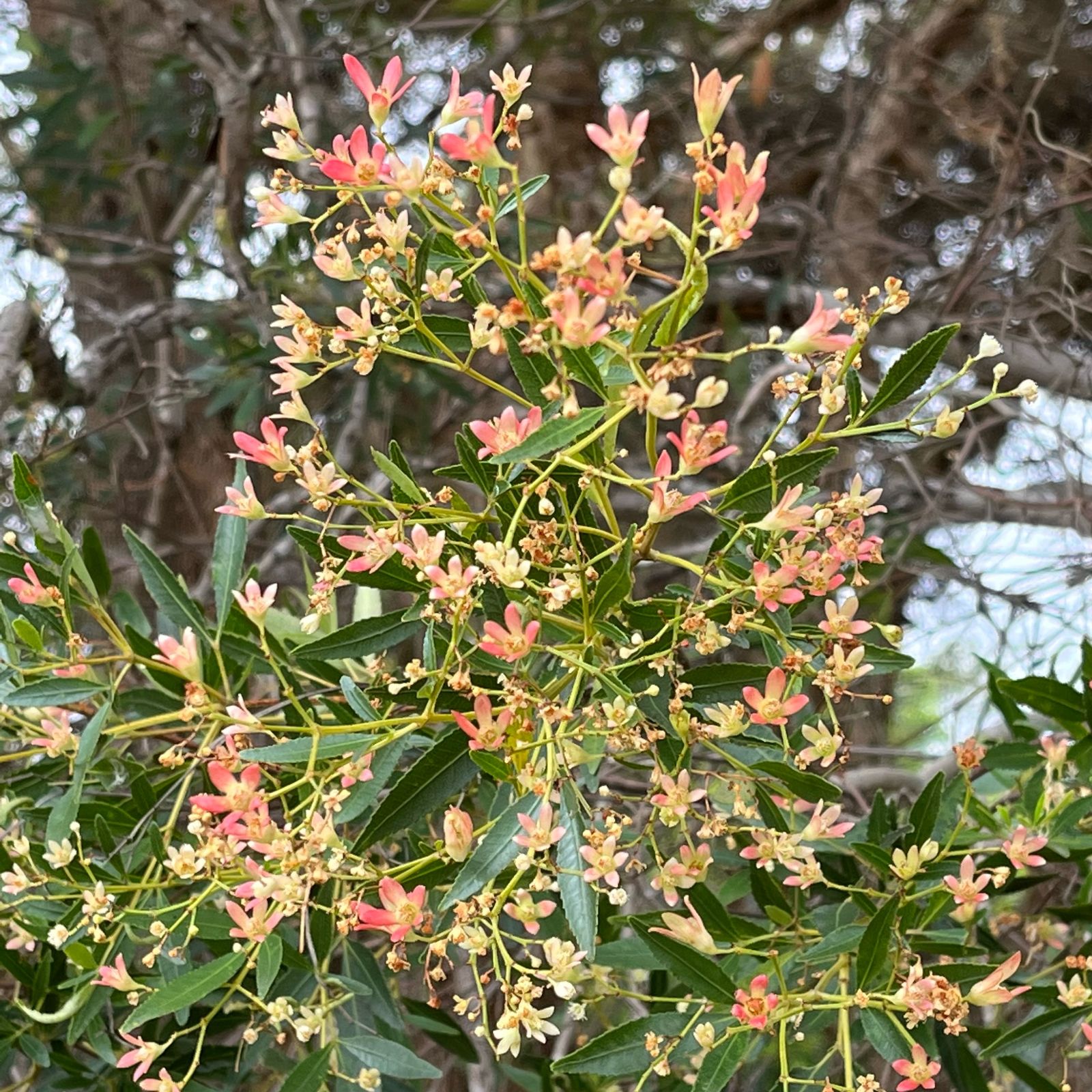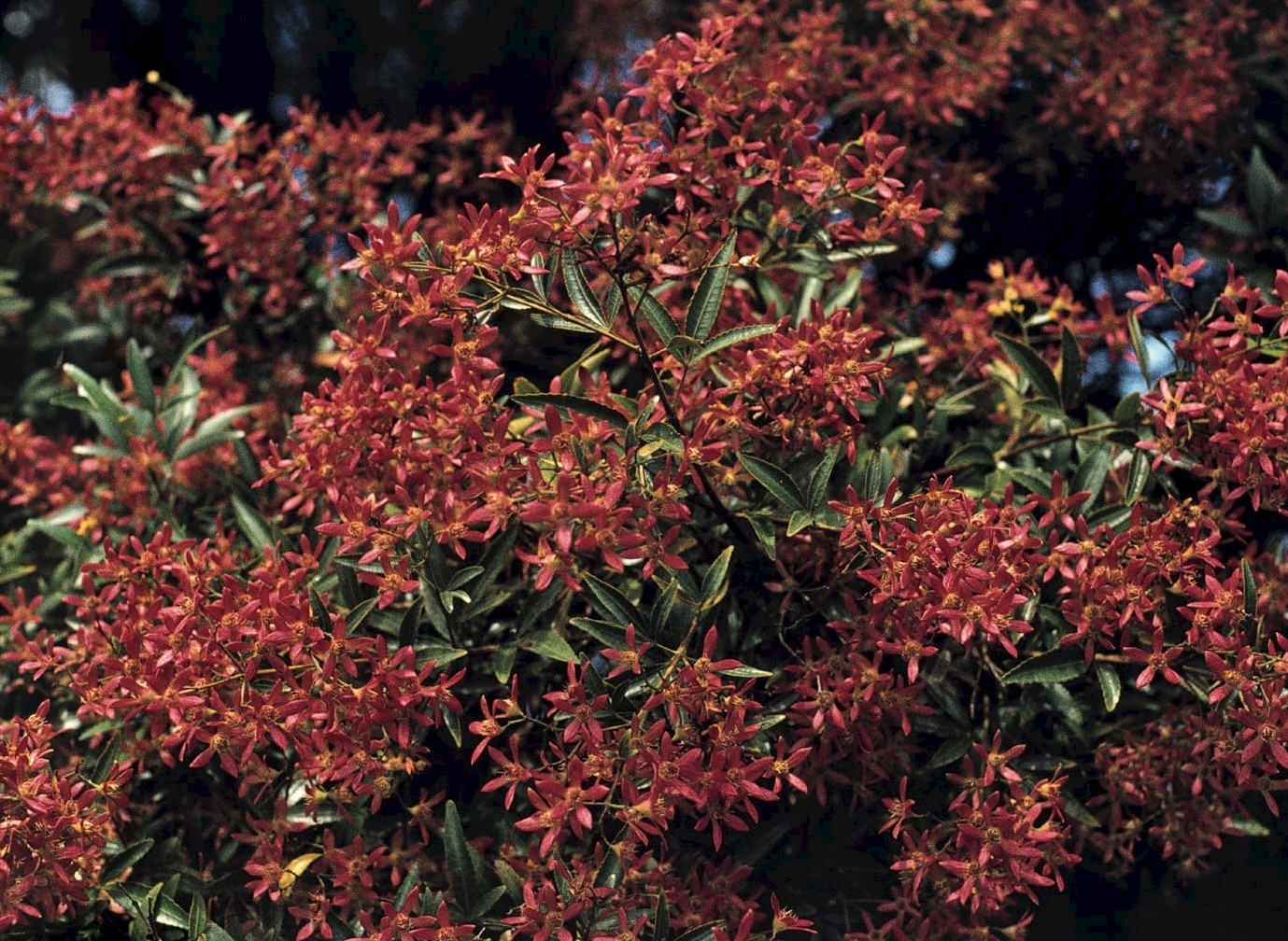Ceratopetalum gummiferum
Credits
Article from New Trees by John Grimshaw & Ross Bayton
Recommended citation
'Ceratopetalum gummiferum' from the website Trees and Shrubs Online (treesandshrubsonline.
Genus
Common Names
- New South Wales Christmas Bush
Other taxa in genus
Shrub or tree to 12 m. Bark rough. Branchlets with two longitudinal ridges above the leaves; quadrangular in section when young, later terete. Leaves evergreen and decussate, shiny and leathery, trifoliolate, terminal leaflet symmetrical, ovate to elliptical, 3–10 × 0.7–3 cm, lateral leaflets slightly asymmetrical, 1.8–6 × 0.7–2.3 cm, upper surface with flat or slightly raised midrib, lower surface glabrous, veins prominent, margins serrate, apex acute; petiole 1.1–2.4 cm long; stipules foliose, ovate, 1–1.5 mm long, somewhat resinous. Inflorescence terminal or rarely axillary, two to three decussate lower branches, terminating in irregular cymes. Monoecious; flowers hermaphrodite, pedicellate and generally 5-merous; calyx lobes bright red, petals deeply incised, with three to five lobes, 0.2–0.3 cm long. Fruit a green capsule with persistent calyx lobes (wings) to 1.6 cm long; petals and stamen filaments persist in the fruit. Flowering September to December, fruiting December to February (Australia). Hoogland 1960, Rozefelds & Barnes 2002, Bradford et al. 2004. Distribution AUSTRALIA: New South Wales (northeastern coast). Habitat Sclerophyllous woodland and other open habitats. USDA Hardiness Zone 9–10. Conservation status Not evaluated. Illustration NT239.
As its common name suggests, this species is an important seasonal plant, popular in Australian gardens and as a cut flower for the display made by the expanded red calyces after the petals have fallen. In full flower the white effect of the inflorescences is pleasant enough but the later display is spectacular, the best coloration being seen in specimens in full sun. Various selections have been made, including plants with white calyces (inevitably called ‘White Christmas’), larger calyces (‘Wildfire’), more compact habit (‘Albery’s Dwarf’), and purple-flushed new growth (‘Magenta Star’), and a variegated clone, ‘Christmas Snow’. Ceratopetalum gummiferum can be grown either as a shrub, with vigorous regrowth after pruning, or as a small tree, and is said to be ‘not affected by frost’ in New South Wales (Elliot & Jones 1984). It is rare in our area. At Tregrehan it is growing slowly but steadily and has flowered, but seems unlikely to form a tree there (T. Hudson, pers. comm. 2006). It is grown in the San Francisco Bay Area. Propagation is by seed, but selections may be propagated by (slow-rooting) cuttings (Elliot & Jones 1984).



